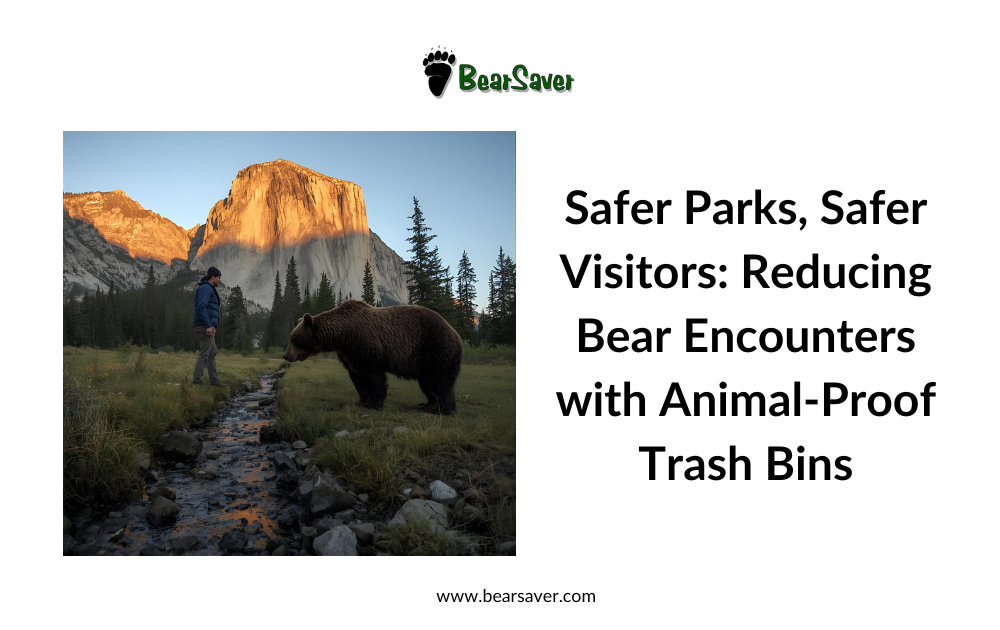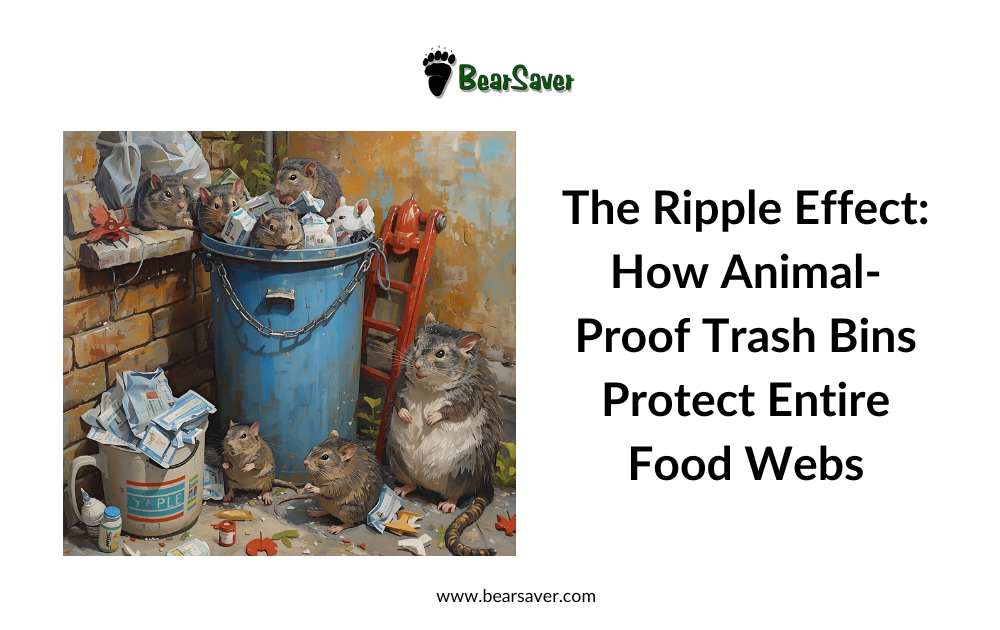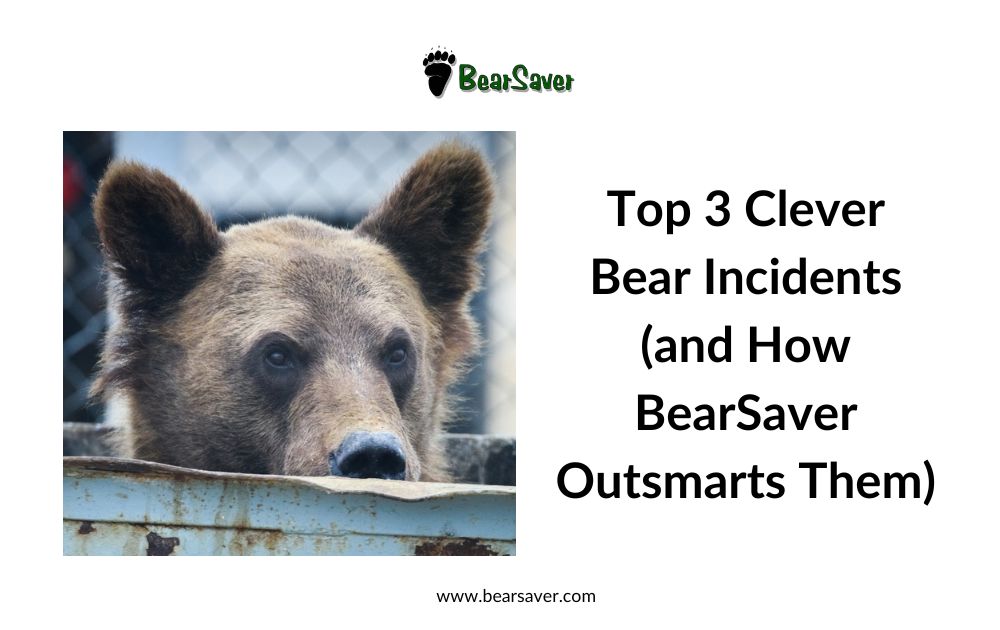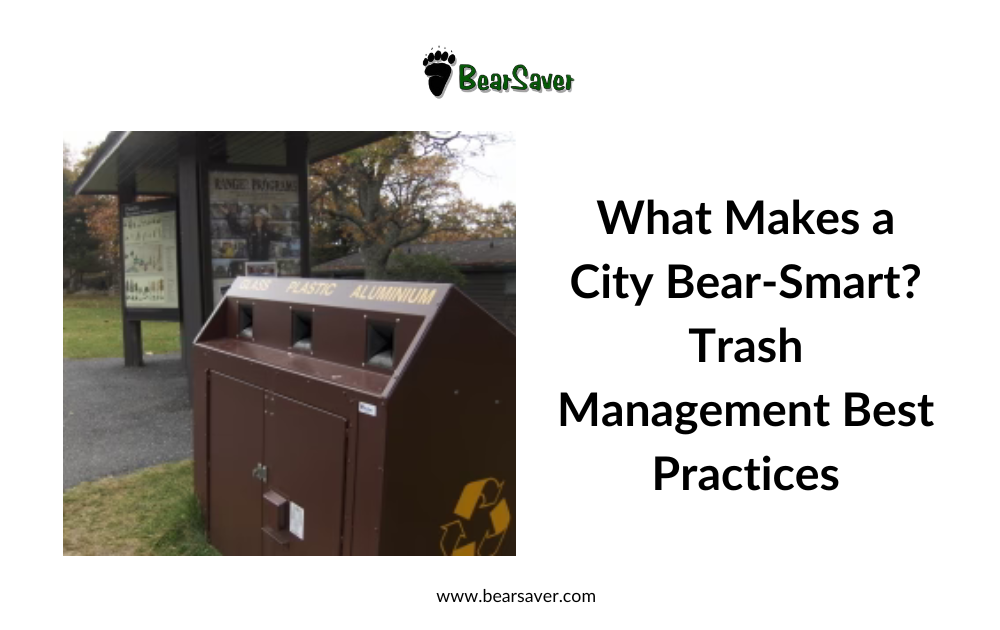News
DIY Fixes Don’t Work: Why Commercial-Grade Animal-Proofing Is the Only Real Solution
Posted by Securr Blogger on
Temporary solutions like chains, straps, and reinforced lids may seem budget-friendly—but for businesses and municipalities facing determined wildlife, these quick fixes are anything but. Wildlife is strong, clever, and persistent. That’s why BearSaver’s engineered commercial-grade enclosures, like the ADA‑compliant CE240MB‑CH, deliver the sustainable, reliable protection you need. The Downside of “Quick Fixes” Chains & Straps: These often fail under force or deteriorate with weather exposure. Animals like bears and raccoons quickly adapt. DIY Lid Reinforcements: Consumer-grade lids aren’t designed for force—bears can apply over 600 pounds of pressure to pop them open. Makeshift Enclosures: Wooden or temporary barriers degrade, fail to meet waste standards, and often become costly in maintenance and non-compliance. Why the CE240MB-CH Beats DIY Every Time The BearSaver CE240MB‑CH is a heavy-duty, ADA‑compliant, animal- and rodent-resistant enclosure engineered for high-stakes environments. Key Features: 80-gallon capacity (two 40-gallon cans included), usable for trash or recycling simply by swapping decals. ADA-compliant pull‑down chutes, operable with a closed fist—ensuring accessibility...
Safer Parks, Safer Visitors: Reducing Bear Encounters with Animal-Proof Trash Bins
Posted by Securr Blogger on
National and state parks, campgrounds, and recreation sites exist to provide safe, memorable experiences in the great outdoors. Yet, as visitor numbers rise, so does the challenge of managing human waste. Improperly secured trash is one of the leading causes of bear encounters—posing risks not only to visitors but also to the bears themselves. When bears learn to associate food with humans, they become more aggressive and persistent, often leading to property damage, injuries, and sadly, the relocation or euthanization of the animal. The simplest, most effective solution is also the most practical: animal-proof trash bins. Why Bear-Proofing Waste Management Matters Protecting Visitors – Encounters with food-conditioned bears can escalate quickly. Securing trash minimizes the risk of dangerous interactions, keeping campgrounds and picnic areas safe for families. Preserving Wildlife – Bears that access human food lose their natural foraging instincts and may become dependent on visitors. Wildlife managers often face heartbreaking decisions when these animals pose a threat. Maintaining Park...
The Ripple Effect: How Animal-Proof Trash Bins Protect Entire Food Webs
Posted by Securr Blogger on
When we think about waste management, most of us focus on cleanliness, public safety, or preventing wildlife encounters. But the impact of improperly secured trash reaches far deeper—shaping the health of entire ecosystems. By investing in animal-proof trash bins, such as those designed by BearSaver, communities can set off a chain reaction of positive environmental outcomes. Step One: Keeping Rodents in Check Unsecured trash is a buffet for rodents. Rats and mice thrive in urban and commercial areas where food waste is plentiful, leading to booming populations. While this may seem like a localized nuisance, the reality is that unchecked rodent growth creates imbalance. Overabundant rodents spread disease, damage property, and consume food sources that native species rely on. By using BearSaver’s CE240-CHR Double Trash/Recycling Enclosure, for example, food scraps and waste are locked safely away from opportunistic scavengers. When rodents lose easy access to trash, their populations stabilize at natural levels. Step Two: Safer Raptors and Predators Rodents don’t...
Top 3 Clever Bear Incidents (and How BearSaver Outsmarts Them)
Posted by Securr Blogger on
Bears are powerful, persistent, and surprisingly resourceful. Their problem-solving skills have led to countless break-ins that may look amusing on social media but cause real safety risks for people and often spell tragedy for the animals themselves. Every time a bear learns trash equals food, the cycle of human-wildlife conflict grows stronger. That’s why BearSaver, the leader in animal-proof commercial trash enclosures, builds containers designed to withstand claws, paws, brute force—and even ingenuity. Their BE Series Double Combo Trash & Recycling Enclosure (BE2-PX) is just one example of how smart design can outmatch even the smartest bears. 1. The Car Door Burglar Incident: In Breckenridge, Colorado, a black bear pulled open the handle of an SUV, climbed inside, and shredded the vehicle’s interior before it was released. Lesson: Bears can observe and mimic human actions. A simple latch or unsecured handle is no defense. BearSaver Solution: Unlike car doors, BearSaver units use gravity-activated, recessed latch systems that can’t be manipulated...
What Makes a City Bear-Smart? Trash Management Best Practices
Posted by Securr Blogger on
Cities that seek peaceful coexistence with wildlife prioritize bear‑safe trash management. By minimizing human-sourced food attractants, urban areas help prevent bear encounters—and reduce the need for costly relocations or public safety measures. Why Bear‑Smart Trash Management Matters Bears have an extraordinary sense of smell and can locate unsecured garbage from afar. Once they find a consistent food source, they return repeatedly, becoming habituated. Habituated bears risk property damage, injury, or conflict, often leading to relocation or euthanasia. A bear-smart city breaks this chain by aggressively controlling trash access and educating its residents on wildlife safety. Proven Strategies That Work Mandate bear‑resistant trash containers across public and private areas. Ensure locking mechanisms and animal‑proof features on all outdoor bins. Limit curbside placement to the morning of collection only. Enforce compliance via bylaws and fines for improper waste storage. Provide signage and outreach to educate residents and visitors on proper usage. Spotlight: BearSaver Mini Depot Among BearSaver’s trusted line of animal‑resistant containers,...





